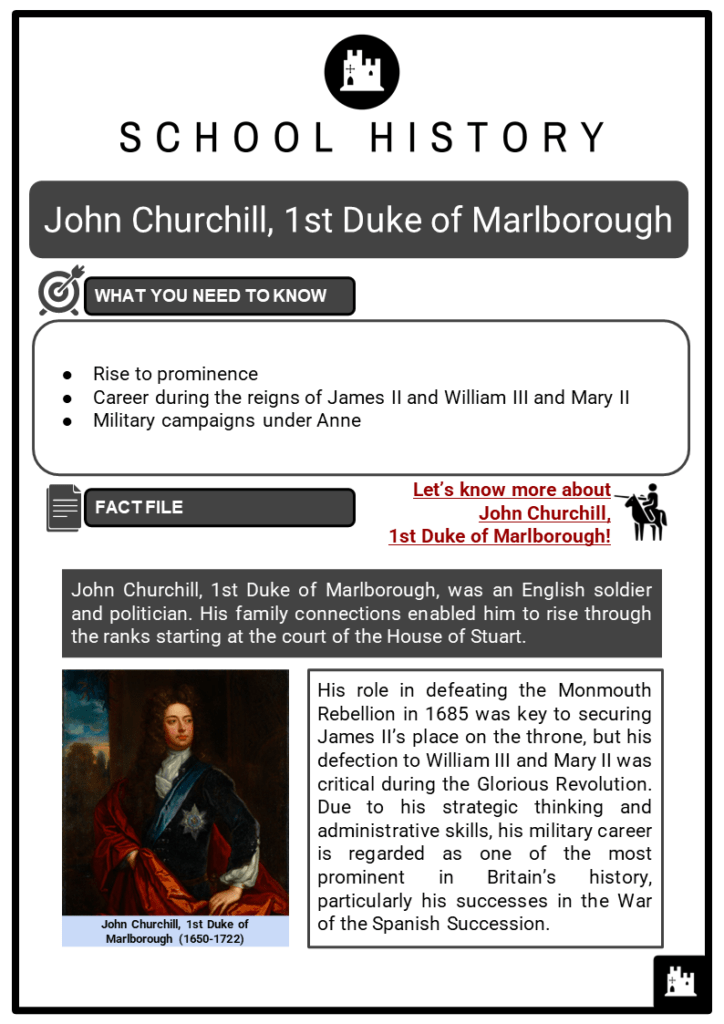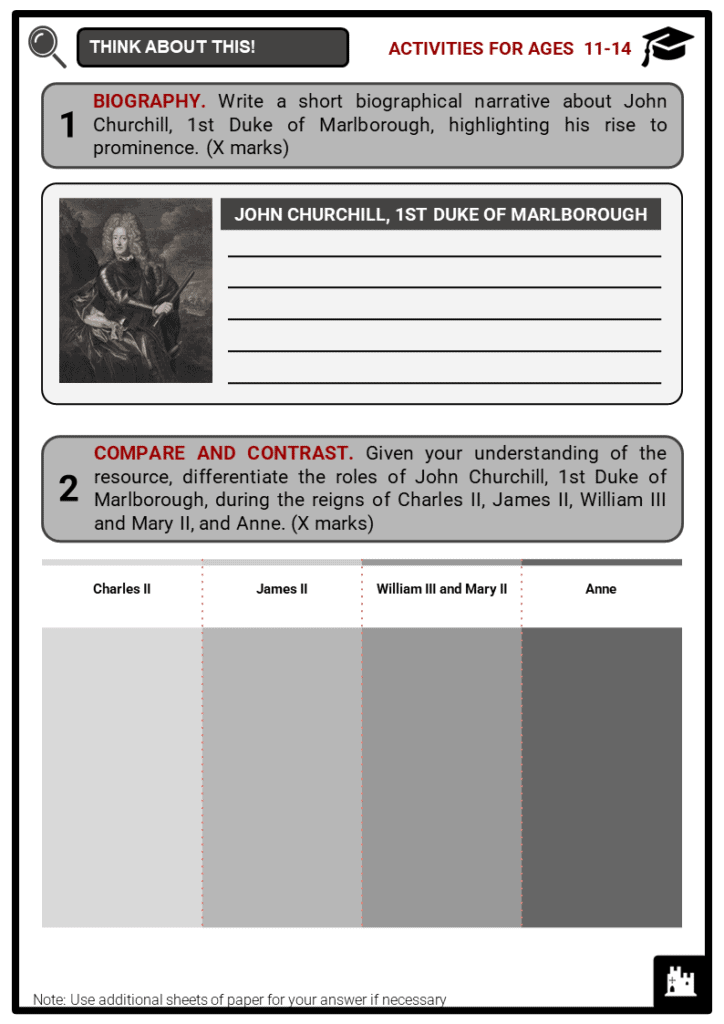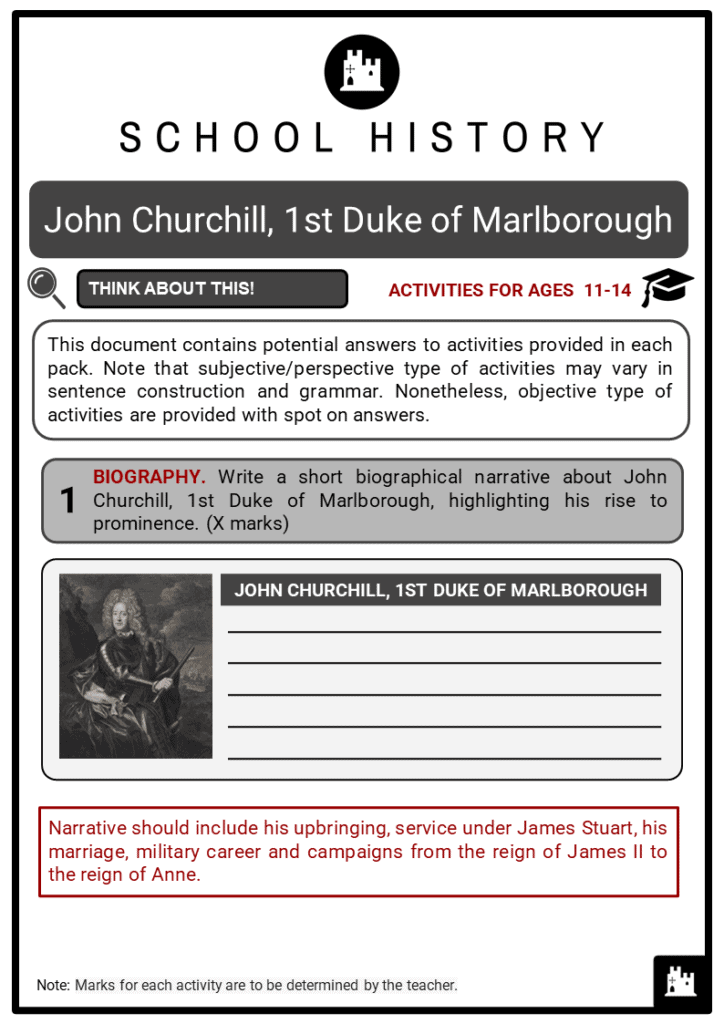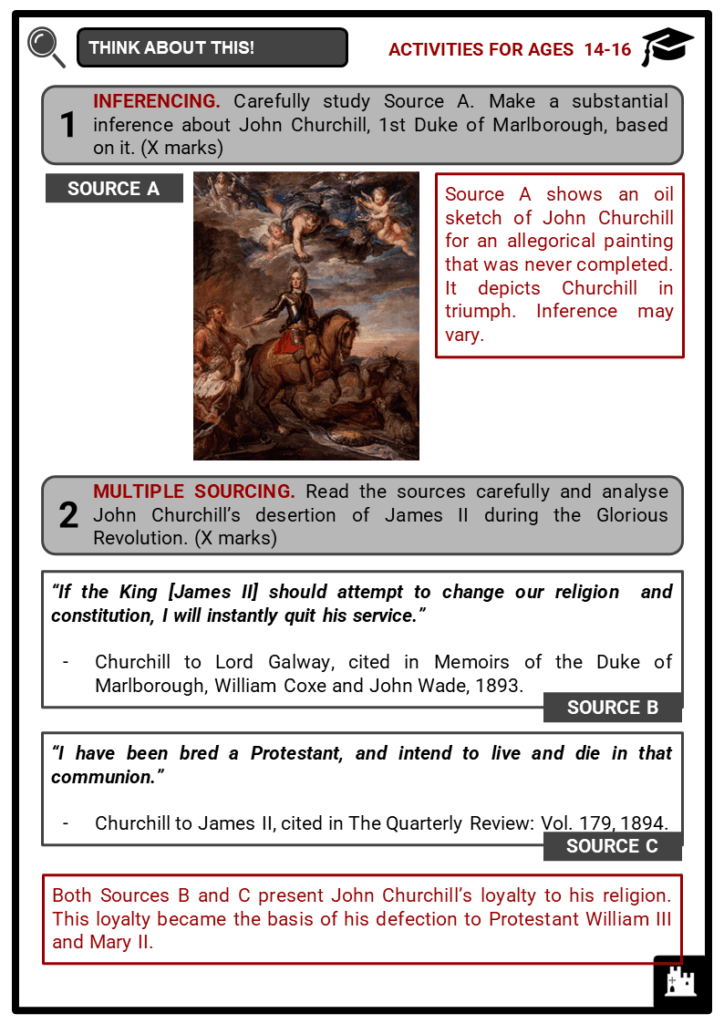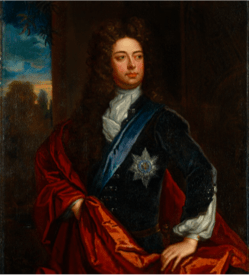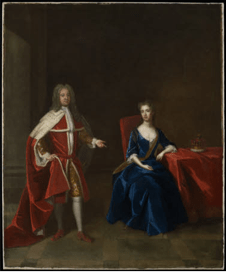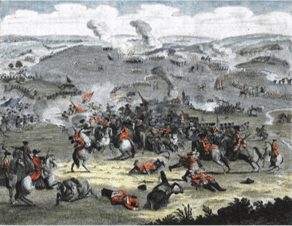Download John Churchill, 1st Duke of Marlborough Worksheets
Do you want to save dozens of hours in time? Get your evenings and weekends back? Be able to teach John Churchill, 1st Duke of Marlborough to your students?
Our worksheet bundle includes a fact file and printable worksheets and student activities. Perfect for both the classroom and homeschooling!
Table of Contents
Add a header to begin generating the table of contents
Summary
- Rise to prominence
- Career during the reigns of James II and William III and Mary II
- Military campaigns under Anne
Key Facts And Information
Let’s know more about John Churchill, 1st Duke of Marlborough!
- John Churchill, 1st Duke of Marlborough, was an English soldier and politician. His family connections enabled him to rise through the ranks starting at the court of the House of Stuart.
- His role in defeating the Monmouth Rebellion in 1685 was key to securing James II’s place on the throne, but his defection to William III and Mary II was critical during the Glorious Revolution. Due to his strategic thinking and administrative skills, his military career is regarded as one of the most prominent in Britain’s history, particularly his successes in the War of the Spanish Succession.
Rise to prominence
- On 26 May 1650, John Churchill was born to Sir Winston Churchill and Elizabeth Drake at Ashe House in Devon. He descended from an influential family. In fact, his father obtained political office in Ireland when Charles II was restored to the throne of England in 1660. His family moved there and returned to London in 1663.
- In 1665, John’s older sister, Arabella, became the Duchess of York’s maid of honour and started an affair with James Stuart, Duke of York. This affair helped the appointments of the Churchill brothers.
- Churchill became the page of the Duke of York.
- James Stuart’s passion for naval and military themes led him to visit the cantonments of troops frequently.
- These visits encouraged Churchill’s decision to become a soldier. In 1668, he sailed for the North African port of Tangier that had fallen under the control of England.
- He remained there for three years, gaining field experience in the constant skirmishes with the local Moors.
- Between 1672 and 1673, he served in the Franco-Dutch War under the orders of James Stuart.
- In 1672, he was named Captain for fighting the Dutch fleet at the Battle of Solebay and in 1673, he joined other volunteers in the French siege of Maastricht.
- His behaviour earned him the recognition of the Stuart family and its allies, the Bourbons.
- The English Parliament decided to terminate England’s participation in the war.
- However, some English regiments remained in French service, including Churchill who was appointed Colonel under the command of Marshal Turenne.
- From 1674 to 1675, he participated with his regiment in the battles of Sinsheim, Entzheim and Salzbach, where Turenne died.
- In 1675, Churchill returned to England and met Sarah Jennings, maid of honour to Mary of Modena, the second Catholic wife of James Stuart. Around 1677-78, he married Sarah despite the opposition from his father.
- The couple had five children who survived to adulthood: Henrietta (1681), Anne (1683), John (1686), Elizabeth (1687) and Mary (1689).
- Sarah would become an intimate friend and confidant of two queens, which made her a powerful ally and a fearsome enemy.
- Her friendship with the sovereigns decisively marked Churchill’s career.
- Churchill’s influence on Princess Anne was public and notorious, and many public figures of his time used him as a mediator to obtain favours from Anne.
- Churchill was made Lord Churchill of Eyemouth in the Scottish peerage in 1682. Moreover, he was rewarded with numerous estates that allowed him to live in some style and comfort.
Career during the reigns of James II and William III and Mary II
- Having gained more influence, Churchill remained in service of James Stuart. However, he grew conflicted by this close association. He continued to play significant roles in the events that followed after the death of Charles II.
- The Monmouth Rebellion
- When the Duke of York succeeded as James II of England in 1685, James Scott, 1st Duke of Monmouth, supported by some conspirators, claimed the Crown of England.
- The king granted command of the royal troops to Louis de Duras, Earl of Feversham.
- Churchill felt aggrieved by this appointment since he believed he deserved it.
- The Duke of Monmouth’s peasant rebellion was poorly equipped and directed.
- As a consequence, Monmouth was crushed in Sedgemoor on 6 July 1685.
- Churchill’s tactical skills and courage in battle were key to defeating the rebellion.
- In recognition of his actions during the campaign, Churchill was made Baron Churchill of Sandridge and was granted the lucrative post of Major General.
- After Sedgemoor, he participated in the bloody persecutions and reprisals of those who had supported Monmouth.
- Such persecution disgusted Churchill and led him to gradually move away from his king, patron and friend.
- The Glorious Revolution
- Churchill continued in the army but was careful not to appear as excessively favourable to the increasingly uncompromising religious zeal of James II.
- The king's insistence on redirecting British institutions to Catholicism provoked an initial rejection among his subjects (mostly Protestants) which eventually led to the Glorious Revolution of 1688.
- William, Prince of Orange, who was married to the king's eldest daughter, Mary, arrived at Torbay on 5 November 1688, and from there, he moved with his troops to Exeter.
- The troops of James II, under the command of Lord Feversham, moved to Salisbury.
- In this town, Churchill, an Anglican loyalist, left the Catholic king to join the Protestant William, leaving behind a letter of apology to his former monarch.
- In 1689, after the victory and coronation ceremony of William III and Mary II, Churchill was named Earl of Marlborough and private adviser to the new king.
- Nine Years’ War
- By 1689, the Nine Years’ War had started, in which Louis XIV of France fought against the Grand Alliance which mainly included the Holy Roman Empire, the Dutch Republic, England, Spain, Savoy and Portugal. Churchill served in Flanders and Ireland.
- Despite his skills as a soldier and strategist, he failed to gain the royal importance that he desired under the new king.
- In fact, William III spoke openly of his distrust of Churchill.
- On 20 January 1692, the Earl of Nottingham, Secretary of State, ordered Churchill to resign from all his civil and military positions, expelled him from the army and barred him from entering the court.
- No public explanation of the reasons that led to this decision was given.
- Jacobitism charges
- Rumours of a French invasion grew stronger in the spring of 1692.
- The queen ordered the arrest of all those who supported the restoration of James II.
- On 14 May, Churchill was arrested and sent to the Tower of London as one of the supporters.
- He remained there for five weeks until it was concluded that the letters between the deposed James II and the nobles, which had been presented by Robert Young, were a forgery.
- Churchill was released and rehabilitated. However, he continued to maintain contact with James II, which led to the Camaret-Sur-Mer incident.
- The allies had planned an attack on Brest, the main French port in the Bay of Biscay.
- The French intelligence services were warned of the assault which gave Marshal Vauban time to reinforce the defences and increase the garrison.
- On 18 June, the army commanded by the English general Thomas Tollemache failed miserably: most of the troops were killed or captured, and Tollemache died shortly afterwards as a result of his wounds.
- Churchill’s opponents believed that he alerted James II to the allied plans.
- When Mary II died in 1694, William III and Anne, heir to the throne, reconciled.
- Churchill hoped that this would improve his position.
- He was allowed to return to court with his wife but did not receive employment offers.
- He was again implicated in a plot with James II that was later dismissed.
- It was in 1698 that Churchill was finally reinstated to the Privy Council, together with his military ranks. In 1701, the king appointed Churchill Ambassador-Extraordinary and commander of English forces to join the conference at The Hague, in which the Treaty of the Second Grand Alliance was signed.
Military campaigns under Anne
- When Anne succeeded to the English throne in 1702, Churchill re-obtained his place in the court. On 4 May, England formally declared war on France. This came to be known as Queen Anne’s War or the War of the Spanish Succession.
- Churchill received the command of English, Dutch and German troops. As captain-general, he had to negotiate with the Dutch envoys.
- In spite of the frustration that the continuous negotiations implied and of the Dutch’s attitude, in 1702 he managed to capture Venlo, Roermond, Stevensweert and Liege in the Spanish Netherlands.
- Thanks to these accomplishments, the queen publicly granted him the title of Duke in December.
- In 1704, the Blenheim campaign took place. That year, the Austrian empire of Leopold I, pressed on its western front by the French and the Bavarians, and on its eastern front by the Hungarian rebels, was about to abandon the war.
- To continue the war with the support of Austria, Churchill had to send reinforcements to the Danube.
- Churchill moved the English troops to the Moselle (a plan approved by The Hague) but once there he abandoned the Dutch troops and continued alone with the Austrians in southern Germany.
- After covering approximately 250 miles in five weeks, on 2 July, after the Battle of Schellenberg, he created a safe passage for supplies across the Danube.
- On 13 August, together with the Austrian troops of Prince Eugene of Savoy, the English defeated the Franco-Bavarian troops at Blenheim.
- The campaign continued with the capture of Landau in der Pfalz on the Rhine, Trier, and Trarbach on the Moselle.
- In 1706, the French generals achieved some victories in Alsace and Italy by stopping the advance of the Allies.
- On 23 May, near the town of Ramillies in Wallonia, Churchill decisively defeated the Bourbon troops commanded by Marshal Villeroy.
- By the end of this campaign, he had conquered almost all the Spanish Netherlands, while on the Italian front, Prince Eugene of Savoy defeated the French in Turin by expelling them from Valtellina.
- In 1707, the French armies under the command of Marshal Tessé stopped the advance of Prince Eugene of Savoy who had crossed the river Var and was about to occupy Toulon on 22 August.
- Meanwhile in Spain, the Franco-Spanish troops overwhelmingly defeated the allies in Almansa on 25 April, and subsequently occupied Valencia, Alcoy, Denia, Zaragoza, Játiva (which was burnt down) and Lérida.
- Churchill was forced to return to England and explain his inability to win the war.
- The Parliament demanded the transfer of 20,000 men from the Spanish Netherlands to Spain to try to turn the situation around.
- In 1708, after losing Ghent and Brugge to the French, Churchill succeeded in defeating Marshal Vendôme at the Battle of Oudenaarde on 11 July, and on 22 October, occupied Lille, the most powerful fortification on the continent.
- In 1709, after preventing Marshal Villars from taking Tournai on 3 September, the most important confrontation of the war took place in Malplaquet on 11 September.
- The allies won the battle but suffered twice as many casualties as the French.
- His opponents therefore accused Churchill of trying to prolong the war to gain fame and money.
- In 1711, he was accused by the Commons of misappropriation of public funds.
- Due to these accusations, he was dismissed as commander-in-chief and stripped of public office. He lived abroad in a self-imposed exile.
- When George I became king in 1714, he was restored to the offices of captain-general and master of the ordnance, and was made a privy councillor. During this time, he was already a sick man until he died on 16 June 1722 in Windsor.
Image sources:

